|
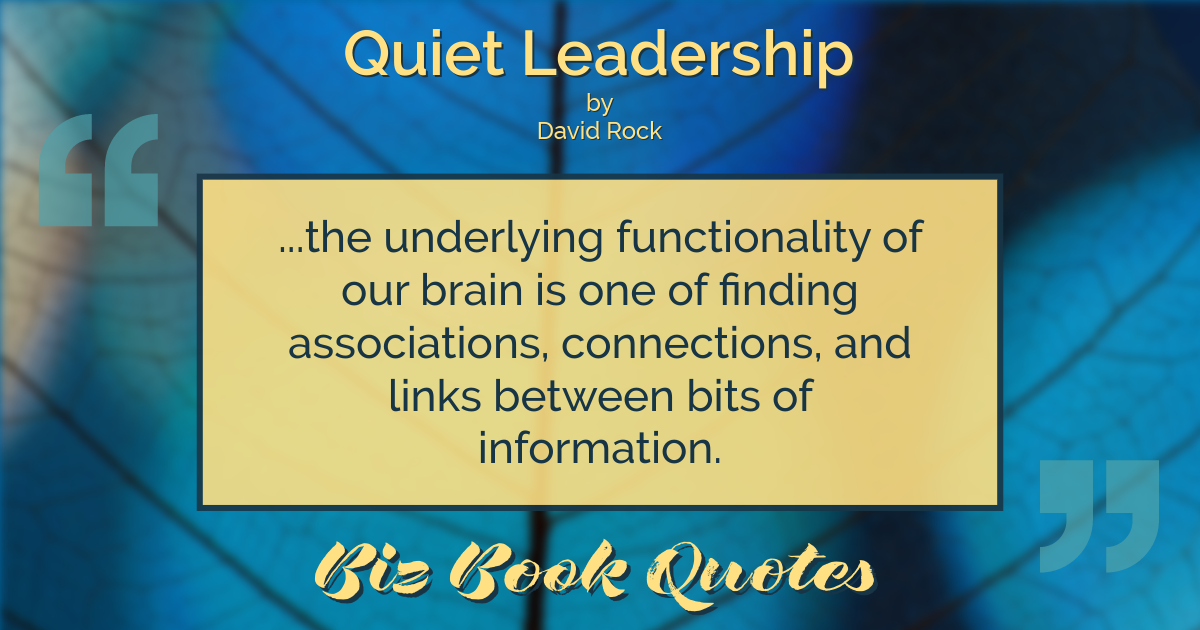
|
Quiet Leadership:
…the underlying functionality of our brain is one of finding associations, connections, and links between bits of information.
|
3 |
|
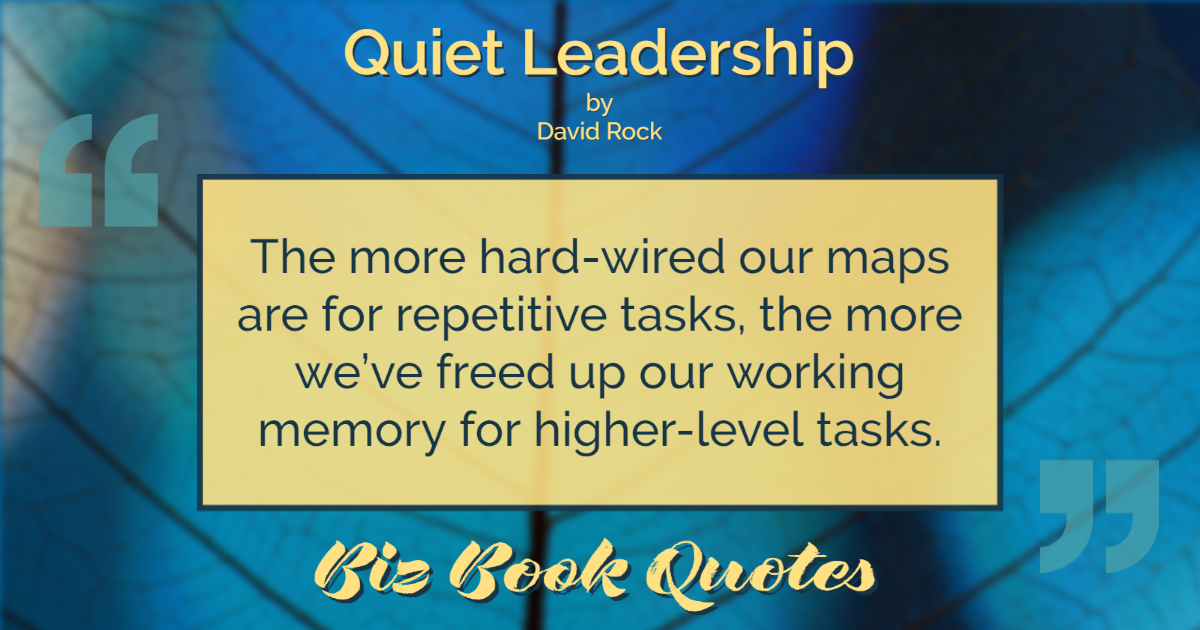
|
Quiet Leadership:
The more hard-wired our maps are for repetitive tasks, the more we’ve freed up our working memory for higher-level tasks.
|
5 |
|
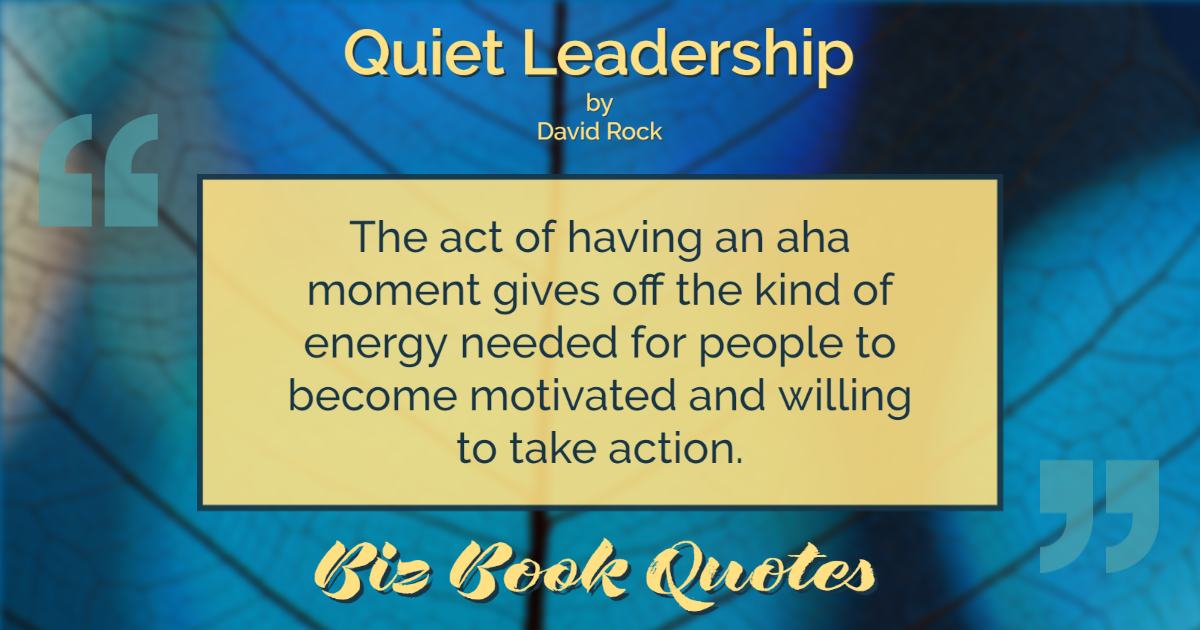
|
Quiet Leadership:
The act of having an aha moment gives off the kind of energy needed for people to become motivated and willing to take action.
|
6 |
|
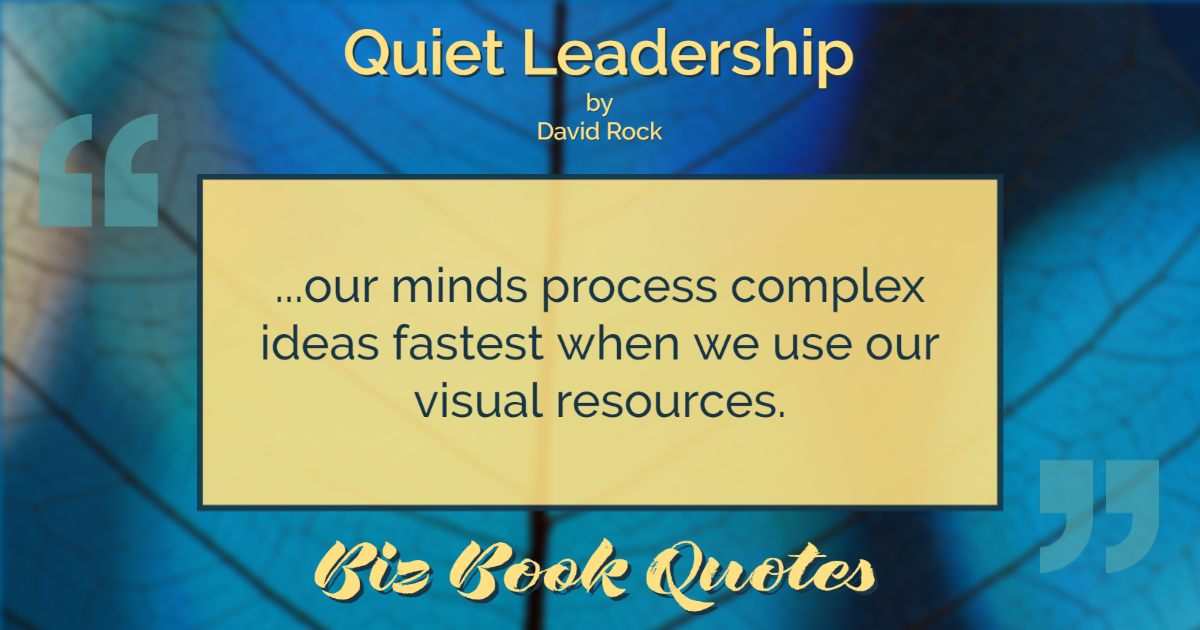
|
Quiet Leadership:
…our minds process complex ideas fastest when we use our visual resources.
|
8 |
|
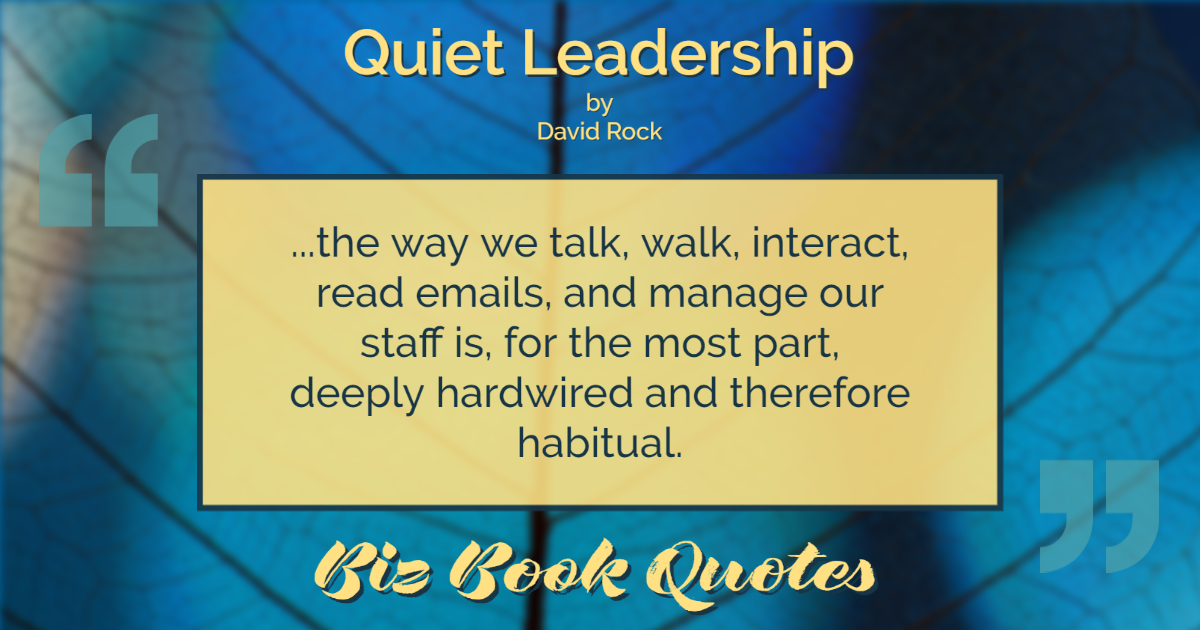
|
Quiet Leadership:
…the way we talk, walk, interact, read emails, and manage our staff is, for the most part, deeply hardwired and therefore habitual.
|
13 |
|
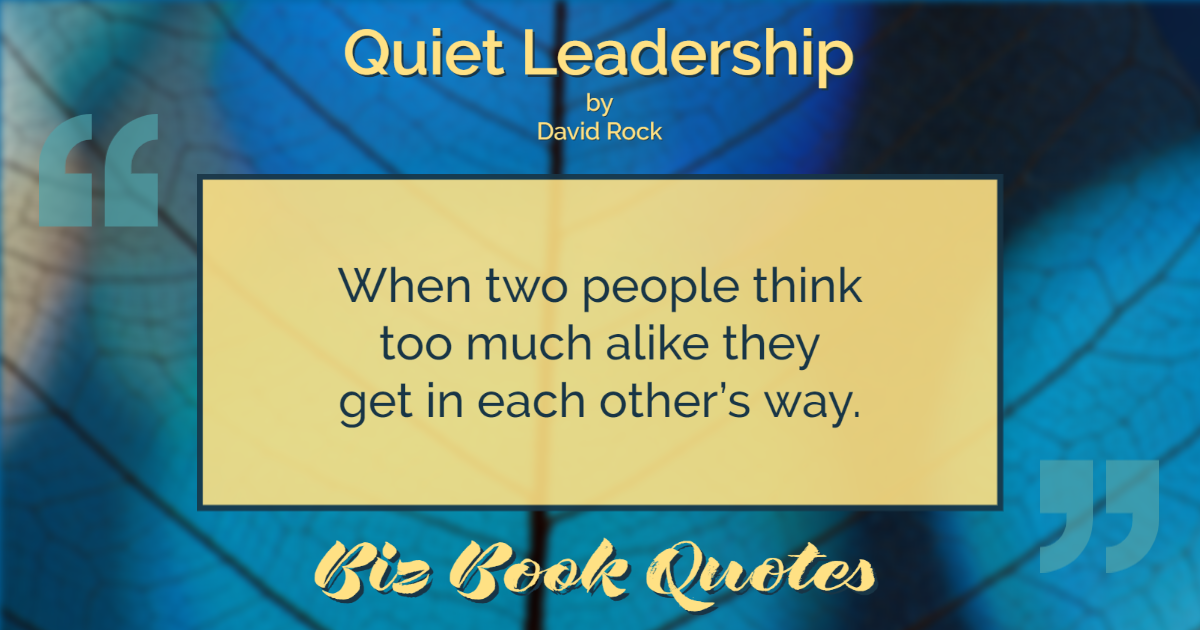
|
Quiet Leadership:
When two people think too much alike they get in each other’s way.
|
18 |
|
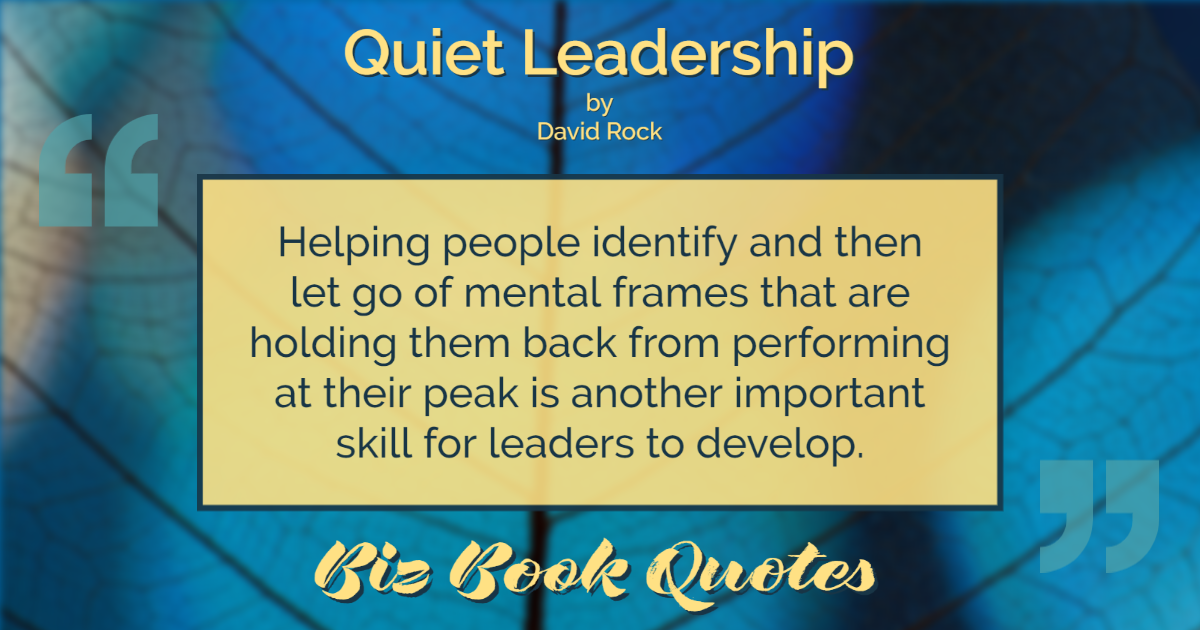
|
Quiet Leadership:
Helping people identify and then let go of mental frames that are holding them back from performing at their peak is another important skill for leaders to develop.
|
18 |
|
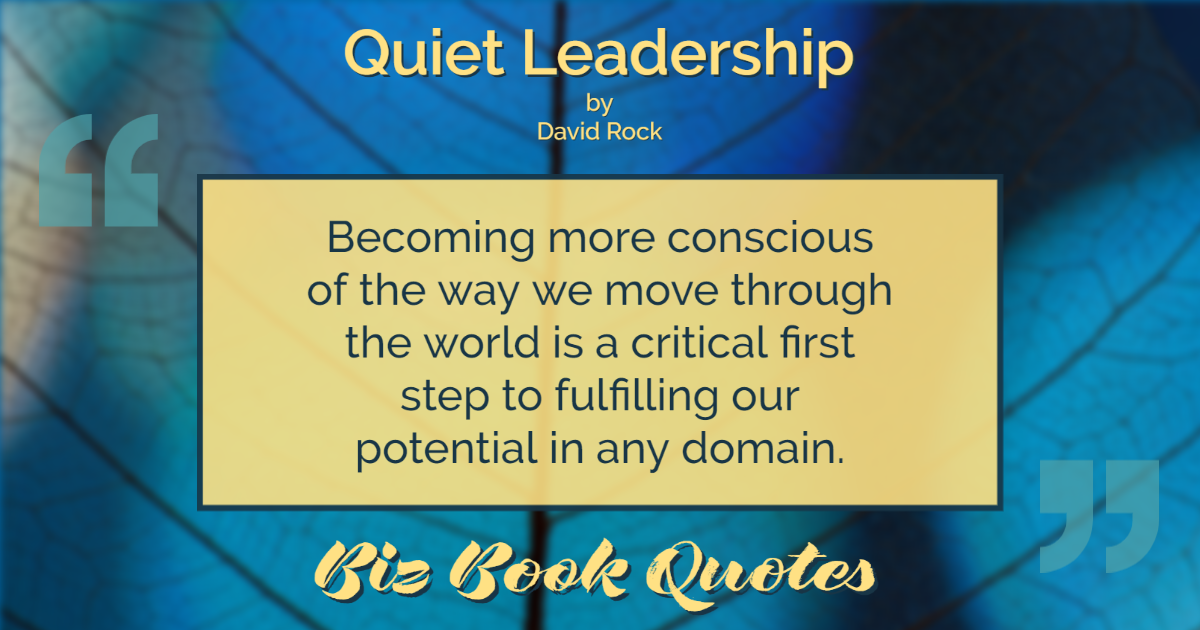
|
Quiet Leadership:
Becoming more conscious of the way we move through the world is a critical first step to fulfilling our potential in any domain.
|
20 |
|
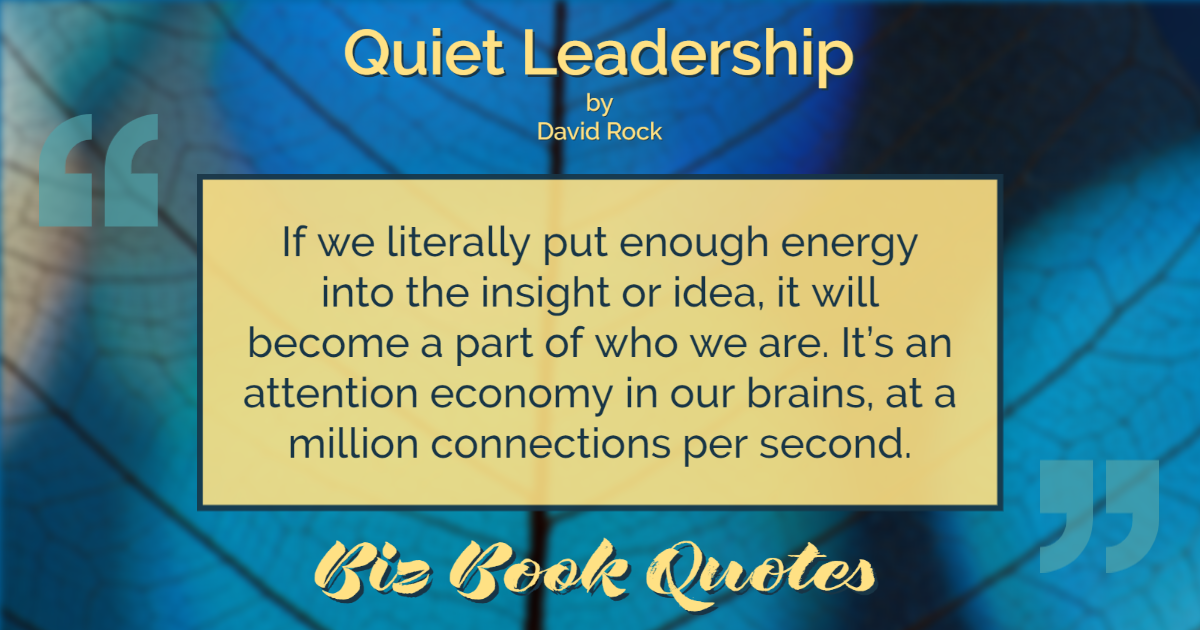
|
Quiet Leadership:
If we literally put enough energy into the insight or idea, it will become a part of who we are. It’s an attention economy in our brains, at a million connections per second.
|
24 |
|

|
Quiet Leadership:
The encouraging sounds of ‘Yes! Good! That’s it!’ help to mark a synapse for preservation rather than pruning. – Thomas Czerner
|
24 |











